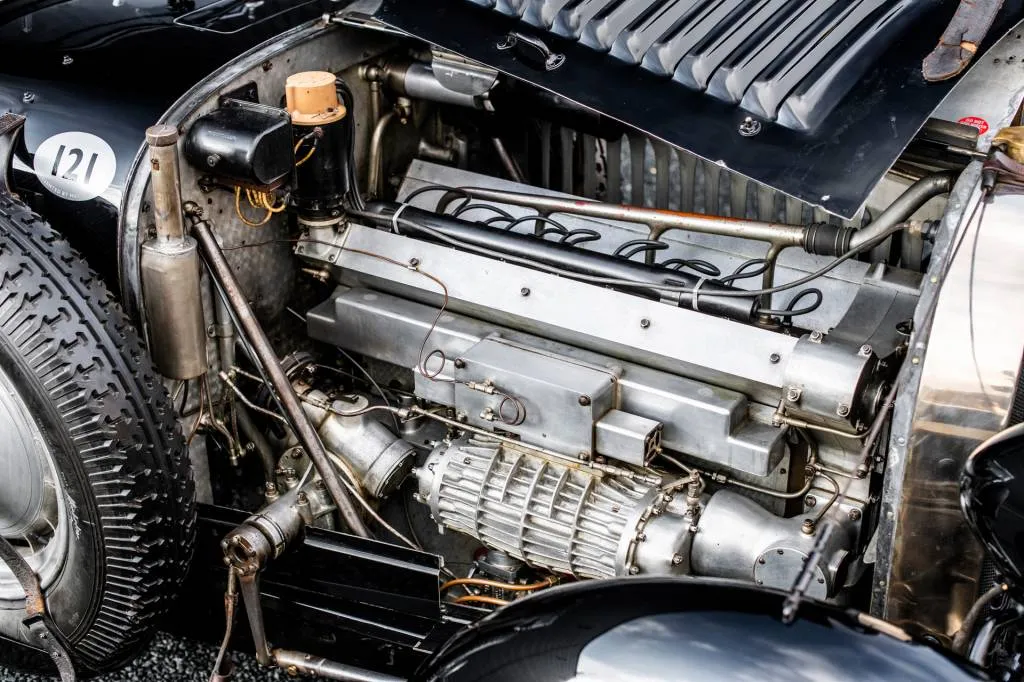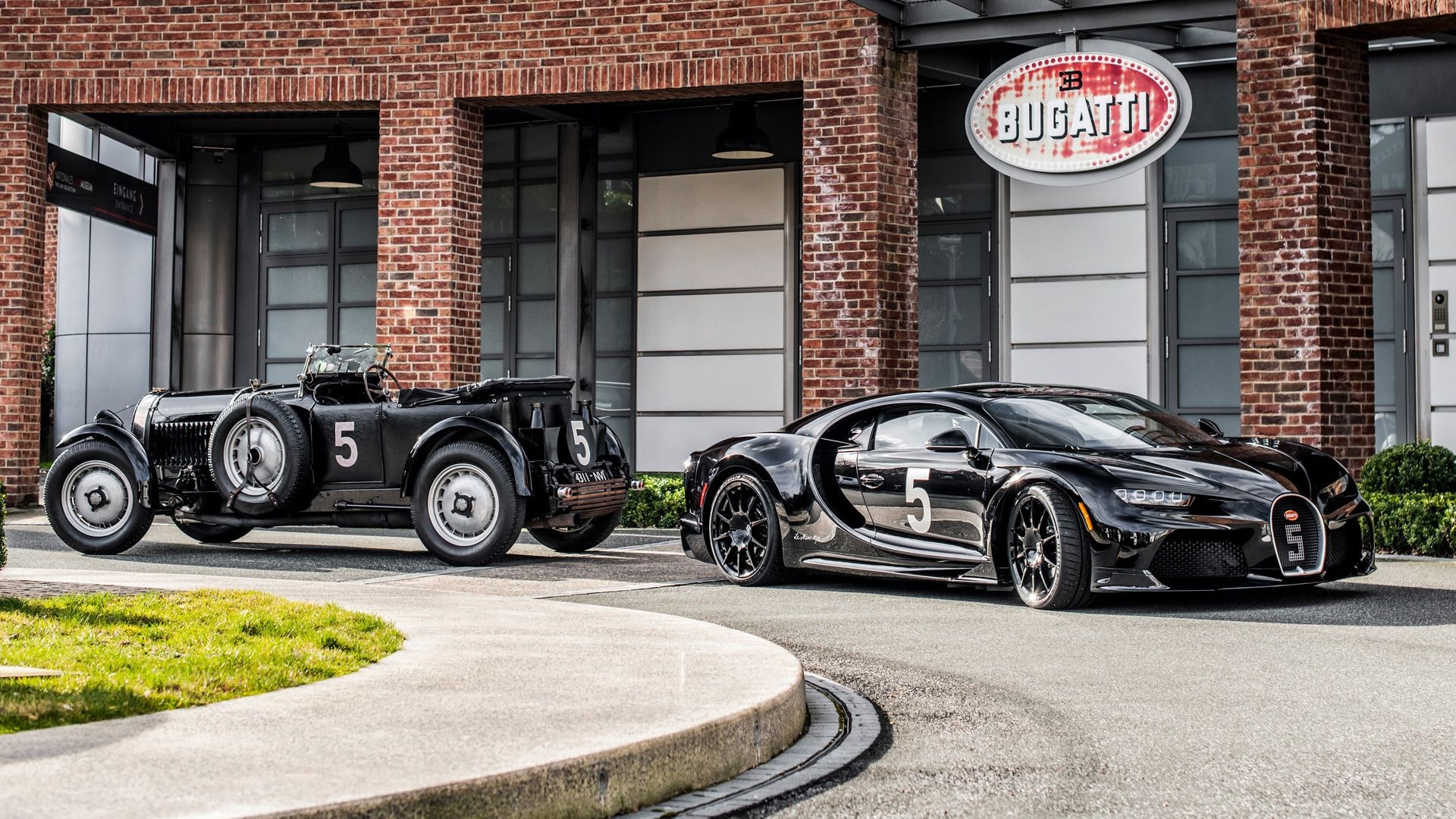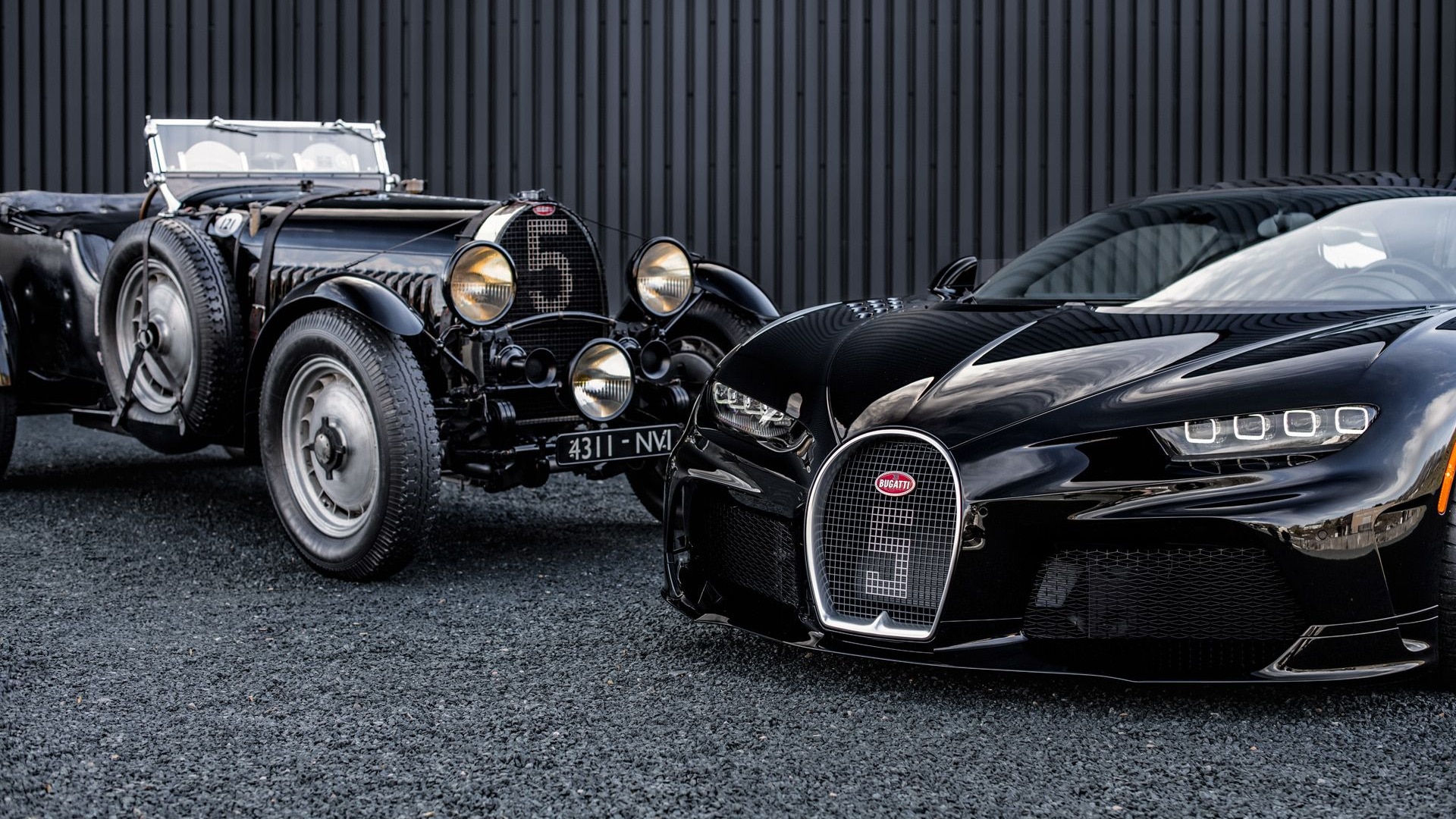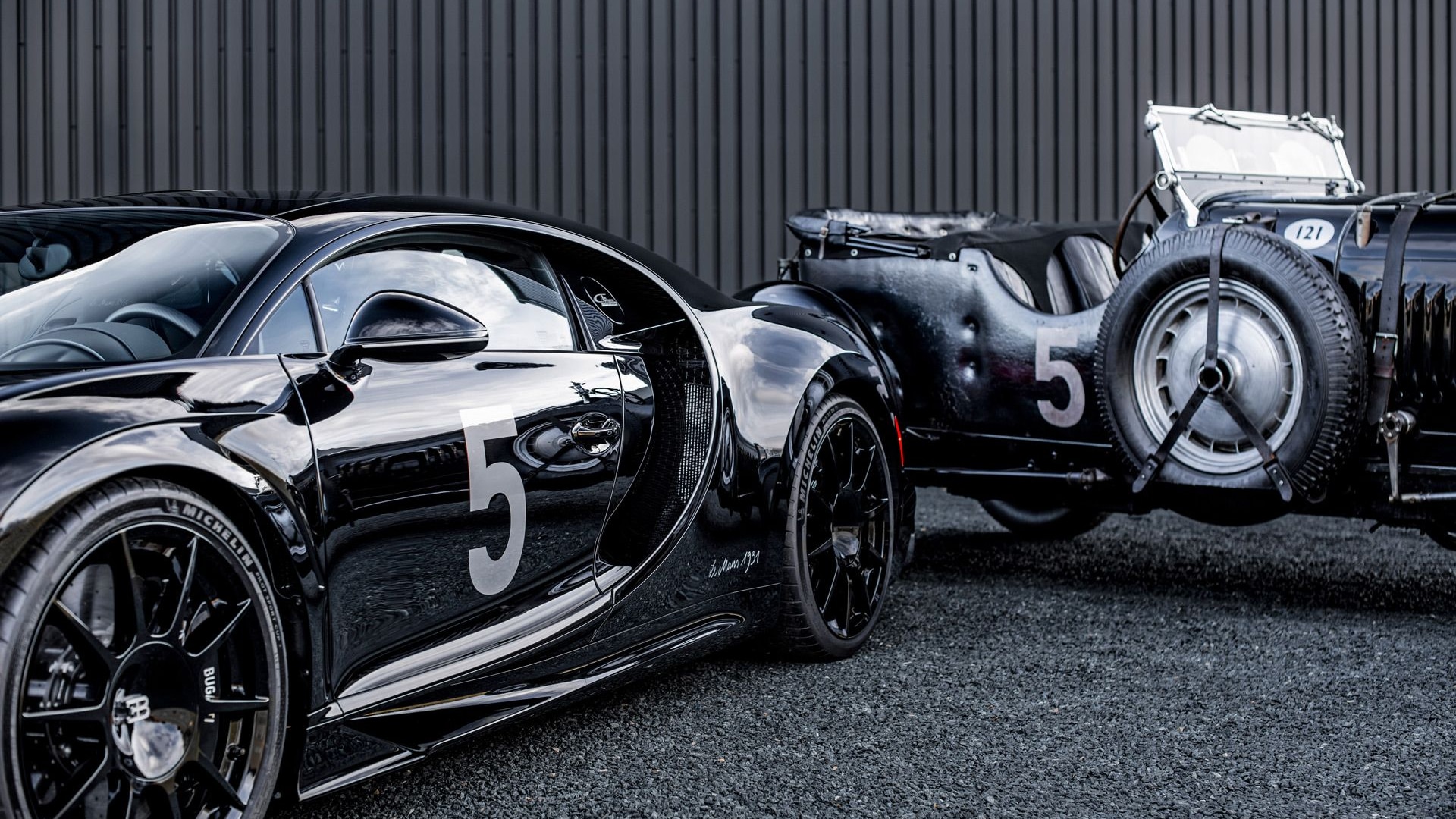Bugatti secured its first overall win at the 24 Hours of Le Mans in 1937 with the Type 57G Tank. However, the groundwork laid by earlier race cars is what allowed Bugatti to design the race winner. The automaker has now honored one of those earlier cars with a modern Chiron Super Sport customized by the Sur Mesure personalization department.
The modern car is officially the Chiron Super Sport Hommage T50S, and it honors the Type 50S that Bugatti used for its first factory entry at Le Mans. That was in 1931, and Bugatti entered three examples of the Type 50S for that debut race. The cars featured a newly developed supercharged 5.0-liter inline-8 that was Bugatti's first engine with dual-overhead camshafts. It was good for close to 250 hp, which was a big number for the period.
One of the cars seemed like a potential winner but a tire failure at high speed caused the car to crash off the track. Bugatti later retired the two remaining cars, including the car bearing chassis number 50177 and racing number 5, which was the car that served as inspiration for the special Chiron.
All the cars entered were painted black instead of the traditional French racing blue. According to Bugatti, this was because the French government at the time refused to sponsor the endeavor. The black color appealed to the buyer who commissioned the Chiron Super Sport Hommage T50S, as he wanted a car with a black-on-black finish.

Bugatti Chiron Super Sport Hommage T50S

1931 Bugatti Type 50S bearing chassis no. 50177
Other details from the T50S recreated for the special Chiron include the square mesh pattern of the grille, the multiple 5 racing numbers adorning the body, plus engine-turned details in the cabin and on the W-16's valve covers that match the design used in the engine bay of the T50S. There's also a recreation of Le Mans' Circuit de la Sarthe on the underside of the rear wing that matches the layout of the track as it would have been in the 1931 race.
As the car is based on the Chiron Super Sport, its quad-turbocharged 8.0-liter W-16 engine is tuned to deliver 1,578 hp, or enough for 0-60 mph acceleration in well under three seconds and a top speed capped at 273 mph.
The Chiron Super Sport is sold out but it was priced from 3.2 million euros (approximately $3.5 million). Bugatti hasn't said how much the custom work of the version inspired by the Type 50S added to that sticker price.
Today, the Type 50S bearing chassis no. 50177 is part of The Loh Collection on display at the Nationales Automuseum in Dietzhölztal, Germany. The collection features cars charting 135 years of automotive history, and includes additional Bugattis such as the Type 57C Aravis, Type 57C Atalante, and Veyron Super Sport.






